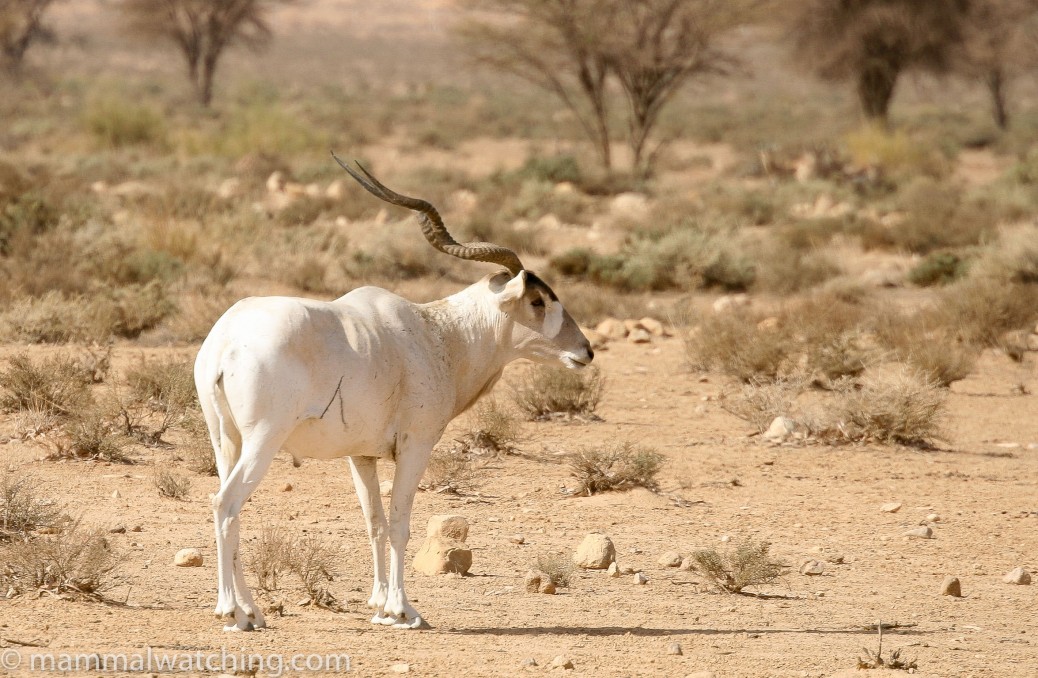
Tunisia
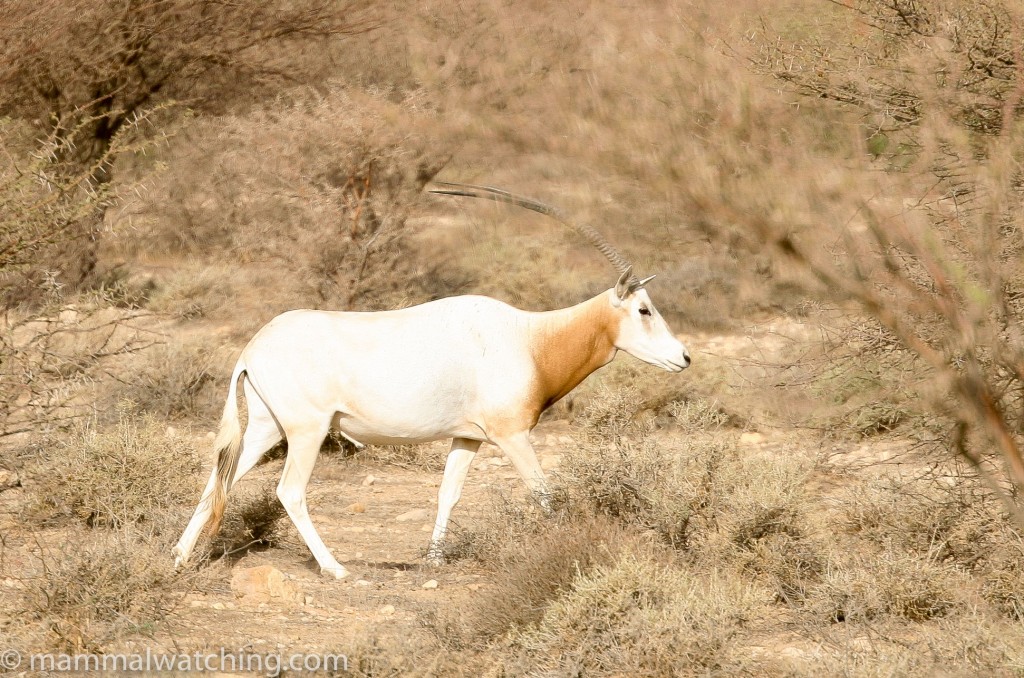
Scimitar-horned Oryx, Oryx dammah, Bouhedma National Park
In September 2008 I traveled to Tunisia for work and took a short side-trip to look for mammals.
Tunisia is the most liberal of the North African countries I have visited – or perhaps I mean the most tolerant. In any case, it was good to see a mixture of young women wearing the veil hanging out with others in jeans and tee shirts. It is also the most developed. Most people speak French and quite a few speak English, it is cheap and the food is good. And even though it was Ramadan it wasn’t so hard to find food in the day time. Tunisia also has some nice national parks, protecting a diversity of habitats from pine forest, through to savannah and desert. And there are some good mammals. Several species have been reintroduced but are living wild and rather hard to see elsewhere.
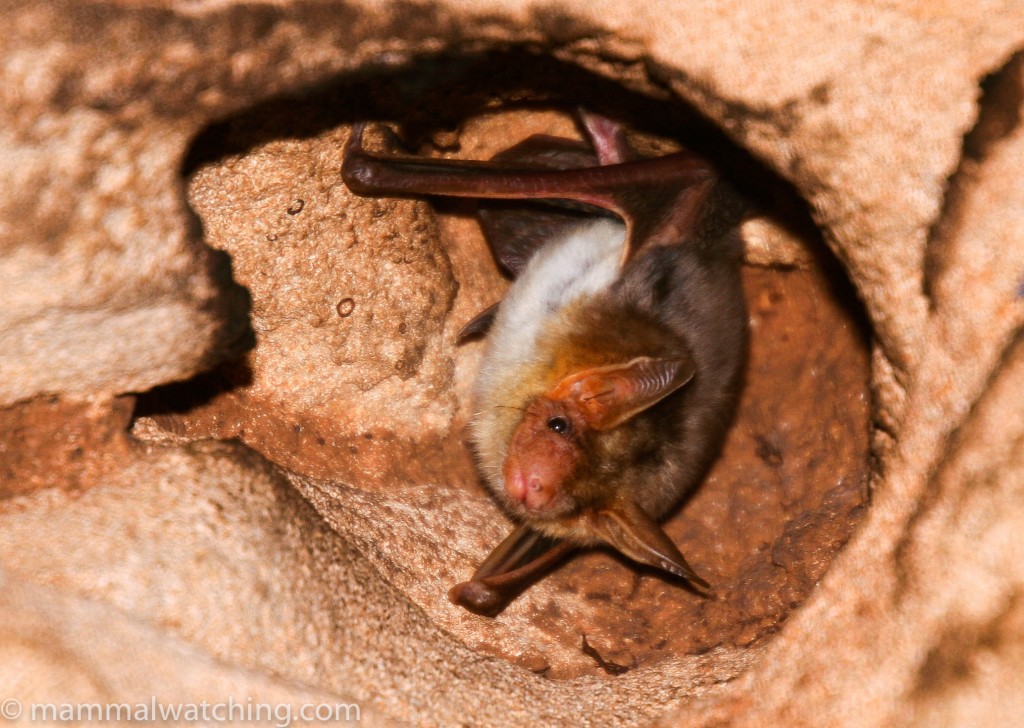
Maghreb Mouse-eared Bat, Myotis punicus, El Haouaria Bat Cave
I arranged my trip through Becasse Ecotours: the only company I could find who seemed to know anything about Tunisian wildlife. Their managing director, Tarek Nefzi, accompanied me. Tarek has spent his entire career as an ecologist, and was both knowledgeable and well connected, as well as hard working and good company. He is also Tunisia’s answer to David Attenborough, and makes his own TV nature programme and his celebrity status unlocked a few doors (or, rather, gates to bat caves and no entry roads). It seems quite complicated to visit the parks, and Tarek had to produce a ream of permits for each place. But they all let us in, and we were – as a consequence – able to go wherever we wanted, stay late and spotlight.
Accommodation options are quite limited in the south of Tunisia and we spent 2 nights at Gafsa. The hotel was comfortable, but it was a 90 minute drive from both Chaambi and Bouhedma Parks so it wasn’t ideal. If I went back I would try to arrange to camp, or find some less salubrious accommodation closer to each park. Tarek was hoping to open accommodation in Bouhedma when the government bureaucracy finally gets around to thinking about it.
Chaambi National Park
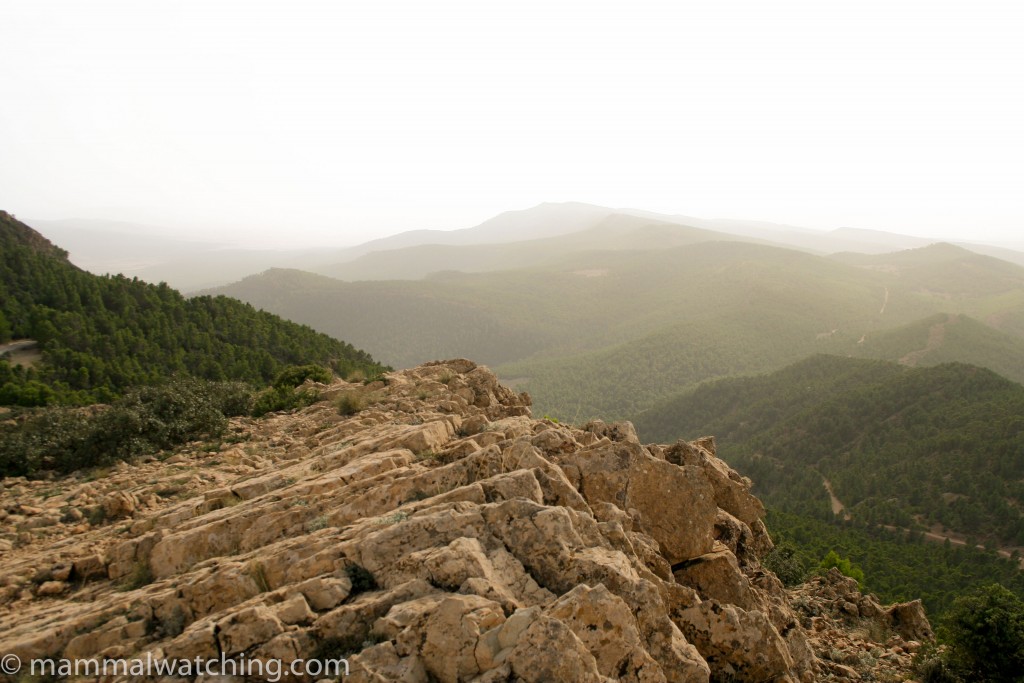
Chaambi is about three hours’ drive south of Tunis. The park protects Jebel Chaambi – Tunisia’s highest mountain – which is largely covered with pine forest. It is a pretty place and we were the only people there.
The two species I wanted to see here were Barbary Sheep or Aoudad, which had been reintroduced in the 1980s, and Cuvier’s Gazelle. We started looking for the sheep at 4 p.m. and by 4.30 we’d found a group of nine which we watched for half an hour picking their way up a forested slope. They are impressive animals. But they were the only sheep we saw over the next five hours – perhaps because we turned our attention to the gazelles.
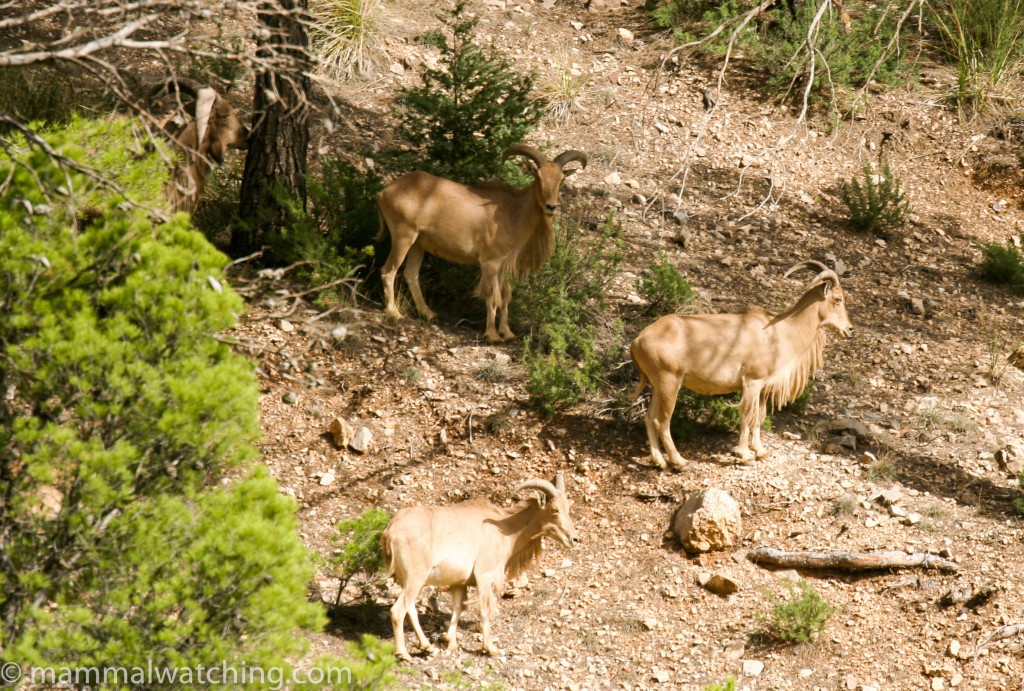
Barbary Sheep (Aoudad), Ammotragus lervia
Cuvier’s Gazelles proved more difficult to find – much more difficult than Tarek expected as he had seen them many times in the past. I got a split second glimpse of the arse-end of one disappearing into the trees from the edge of a clearing. But that was it. The gazelles like forest clearings, and we visited several good-looking spots where Tarek had seen them in the past, as well as circumnavigating the mountain on a rugged 4WD track. But no gazelles. No mammals in fact.
I stuck the spotlight on for 40 minutes at 8.30 p.m. and we saw several Cape Hares both inside and outside the park but nothing else. Striped Hyenas are possible here, as are Porcupines, but the forest is quite dense and not ideal for spotlighting.
Bouhedma National Park
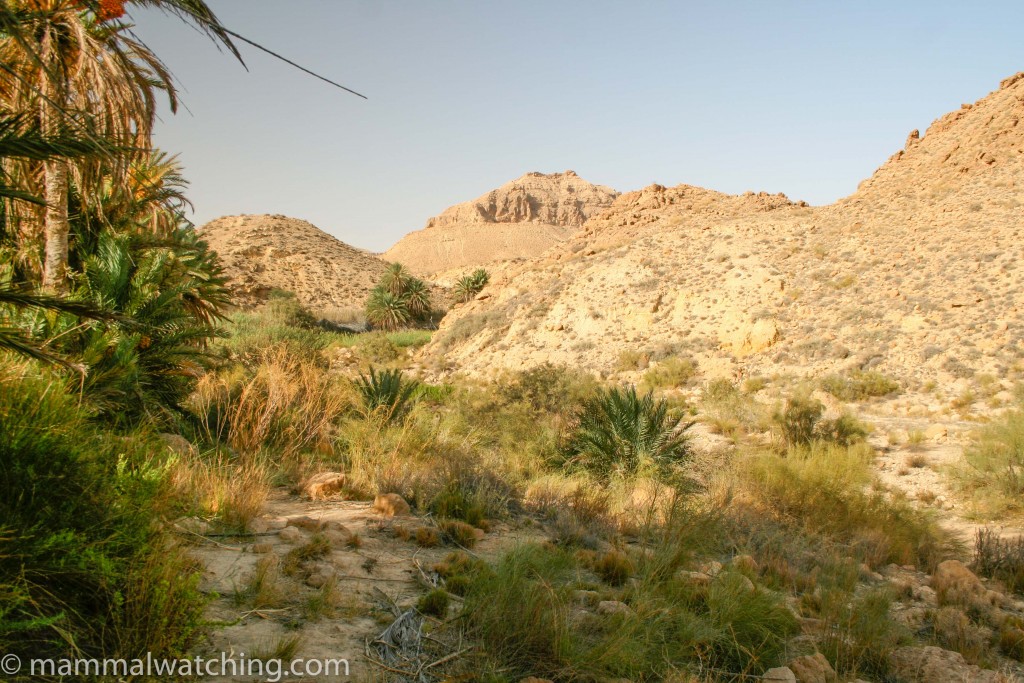
Bouhedma is probably Tunisia’s premier national park and protects the last vestiges of the Tunisian savannah that once formed a belt across the top of the Sahara. A number of species have been successfully reintroduced since the 1980s and they are easy to see.
We arrived at 9 a.m. and quickly saw the first of many Scimitar-horned Oryx.
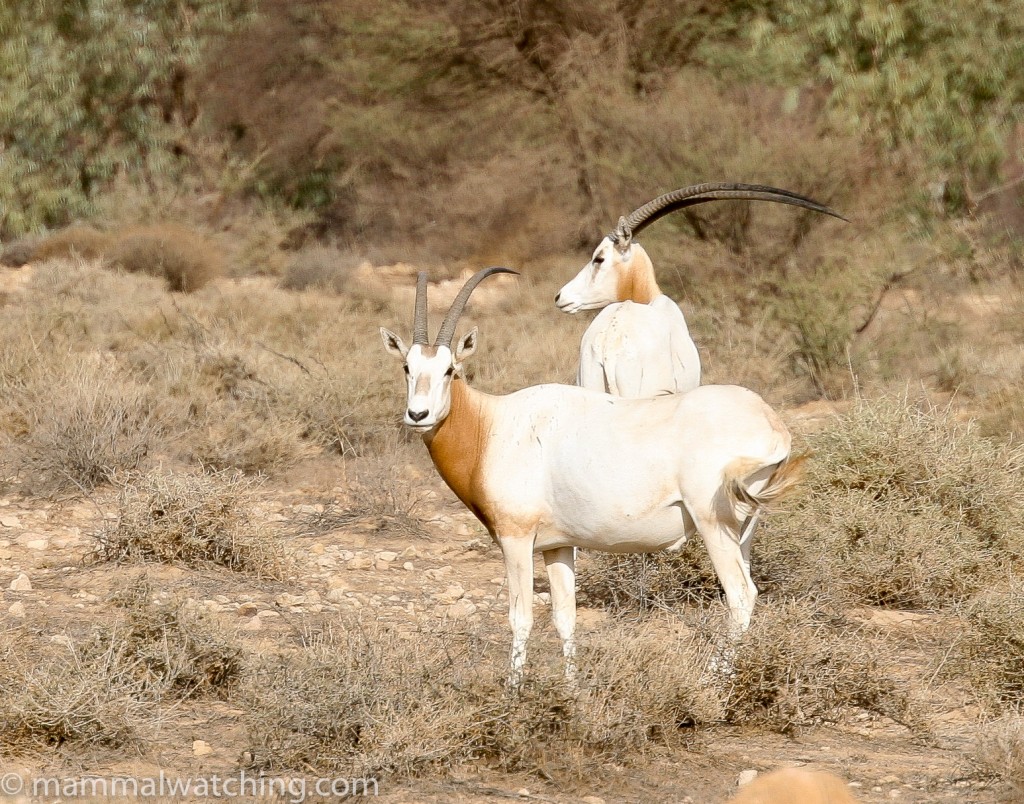
Scimitar-horned Oryx, Oryx dammah
Soon after we saw Dorcas Gazelles, a species that has managed to survive iwithout reintroduction.
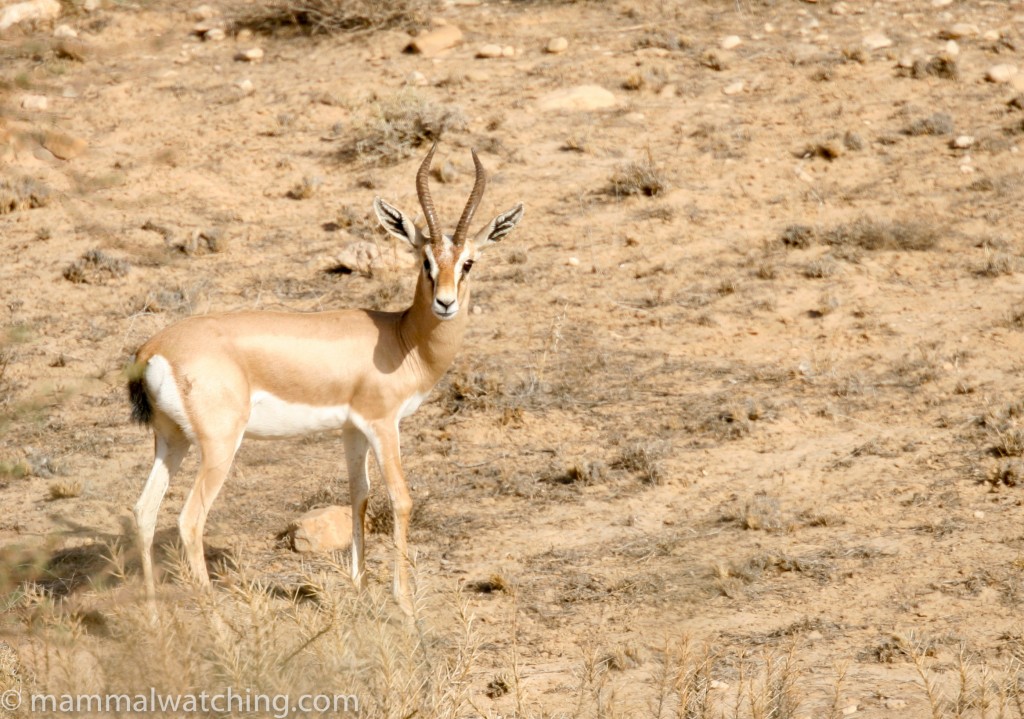
Dorcas Gazelle, Gazella dorcas
Addax and Dama Gazelles have been reintroduced to Bouhedma and were quite easy to find, albeit in smaller numbers.
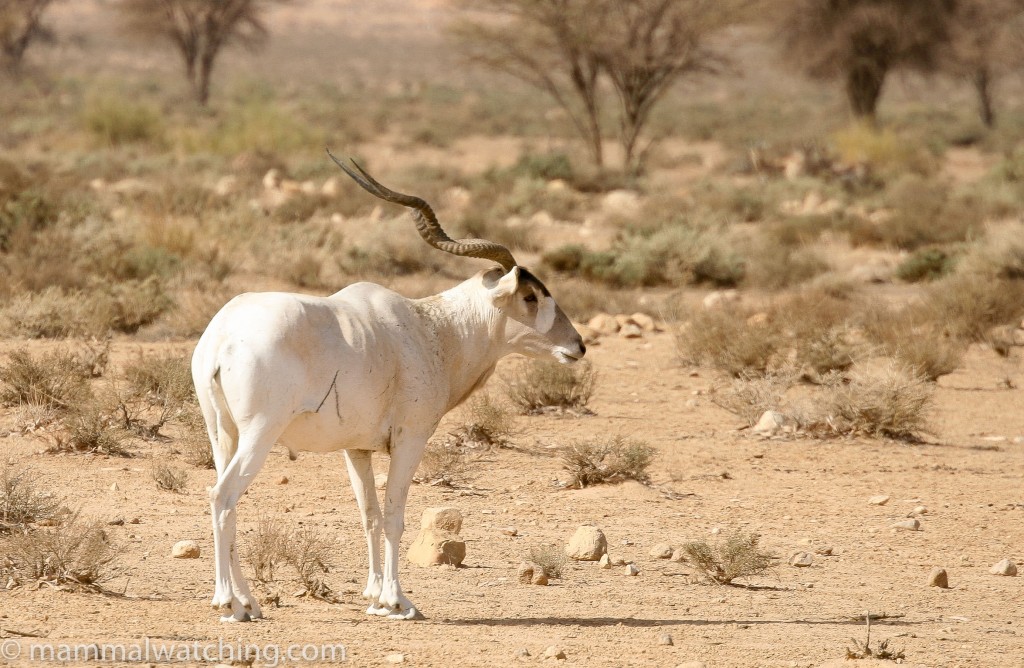
Addax, Addax nasomaculatus
We saw only one solitary Addax and a small group of Damas.
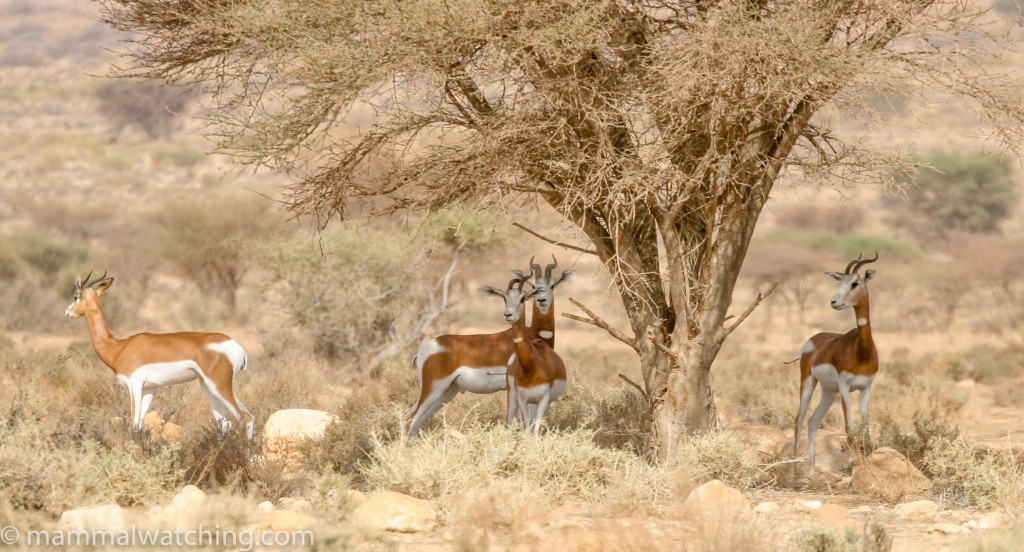
Dama Gazelle, Gazella dama
All nice species to see, and difficult to see elsewhere even if the jury (or at least my conscience) is still concerned that the animals are not truly wild and so I will not include the Addax, Oryx or the Dama Gazelles on my life list.
At 10 a.m. we had several brief views of a Ruppell’s Fox, a species I had seen only once before while spotlighting in Ethiopia. Cape Hares were common.
In the late afternoon we focused our efforts on trying to see Gundis, guinea pigesque rodents that hang out on rocky slopes and cliffs. They are common and easy to see in Bouhedma. Or so I was told. But not that day.
We spent over 3 hours checking out likely looking sites – areas where Tarek had seen Gundis often and even filmed a 20 minute TV programme about them. Nothing. I guess they might be easier to see in the mornings when they sunbathe on the rocks.
During an hour’s spotlighting we picked up another Ruppell’s Fox, several Golden Wolves (one of which approached very close when I squeaked it in), lots of Dorcas Gazelles and Oryxes and my first Lesser Egyptian Jerboa.
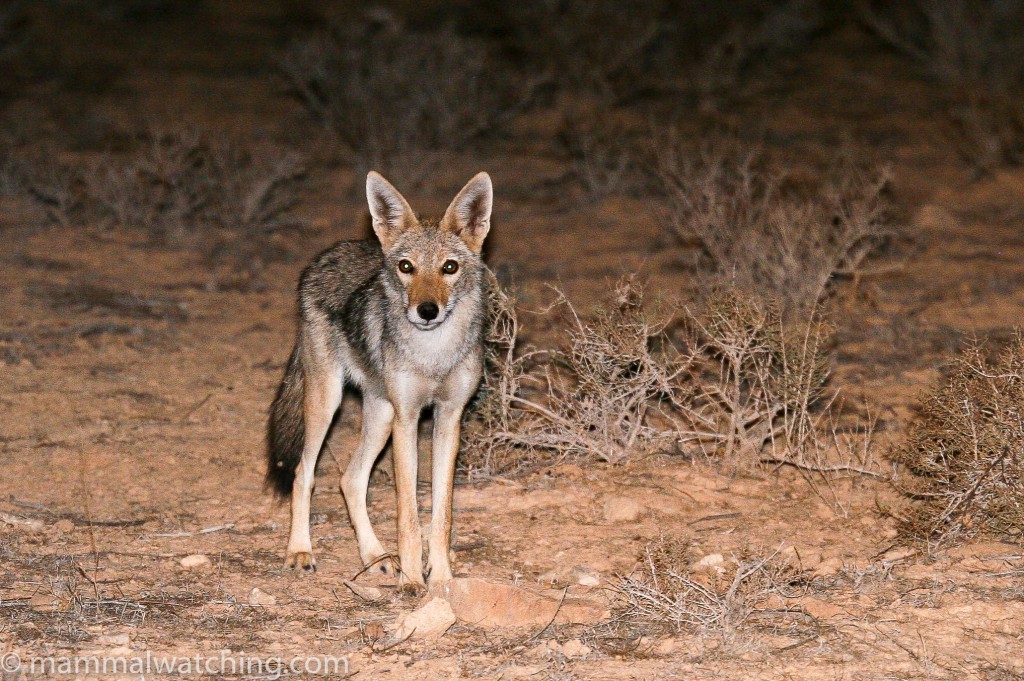
African Golden Wolf, Canis anthus
Although Bouhedma is relatively small, the animals are living wild and breeding successfully, so – using my own code of mammal listing ethics – the reintroduced species are tickable. But I am sure others would disagree and I would like to see Addax, Oryx and Dama Gazelles again somewhere a little wilder. Perhaps it was just the easiness of seeing them that troubled me. Anyway, I reckon it is well worth a visit.
Mides Gorge
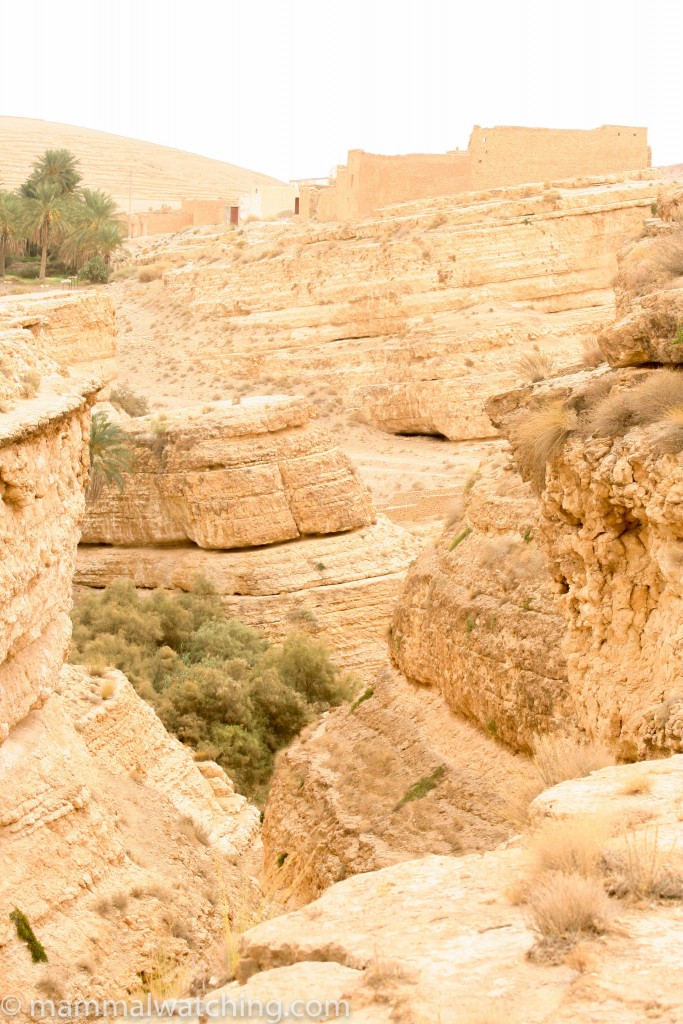
If you are heading from Gafsa to the Sahara, and you haven’t seen a Gundi, you could stop at Mides Gorge. This popular tourist spot that was deserted when I arrived. Although it was 11 a.m. it was still quite cool, and we flushed a Gundi, which didn’t hang around long enough for a photo.
Jbil National Park
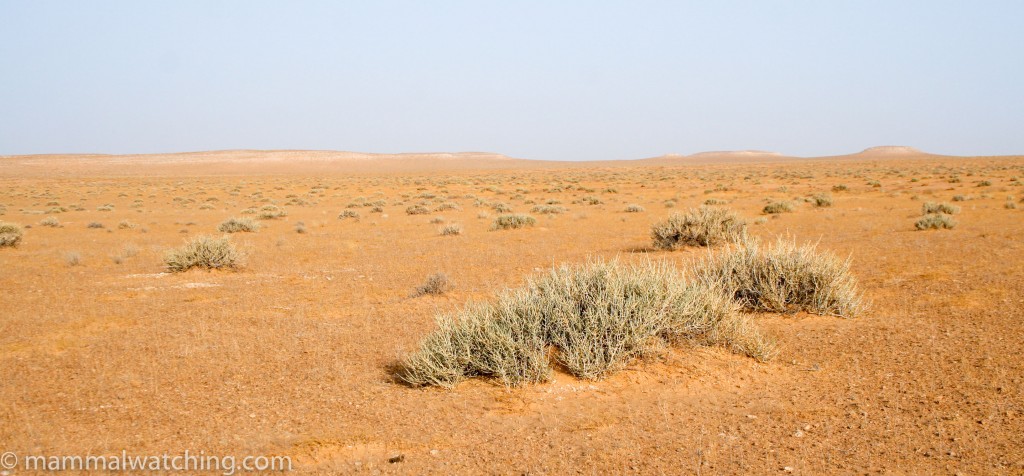
Jbil is a fairly remote park, some 4-5 hours south of Gafsa, the last two of which are along a rugged track. I wouldn’t attempt it without a 4wd. The whole park covers 150,000 hectares of the Sahara, about 45,000 of which are fenced.
They don’t receive many visitors. We were the first people to stay in a while, and I was apparently the first person ever to come especially for mammals. This caused some excitement. And that evening quite a crowd went out spotlighting.
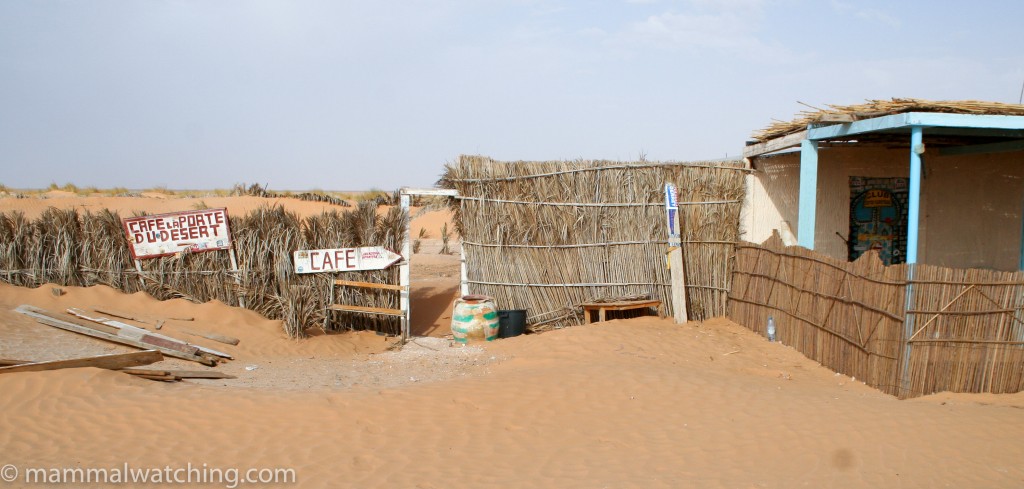
En route to Jbil
They had reintroduced a herd of Addax about a year before we were there and most of them were hanging around the Park HQ at dusk when we arrived waiting for food.
After the guards shared their dinner with us, we went out for a couple of eventful hours’ spotlighting. There is an impressive rodent biomass in the park: we must have seen 20 Lesser Egyptian Gerbils (more of which I caught in Elliott traps overnight) as well as 10 or more Lesser Egyptian Jerboas, one of which we caught by hand (an operation which involved four rangers running frantically for 10 minutes before they finally grabbed the thing: I wish I had had a video camera).
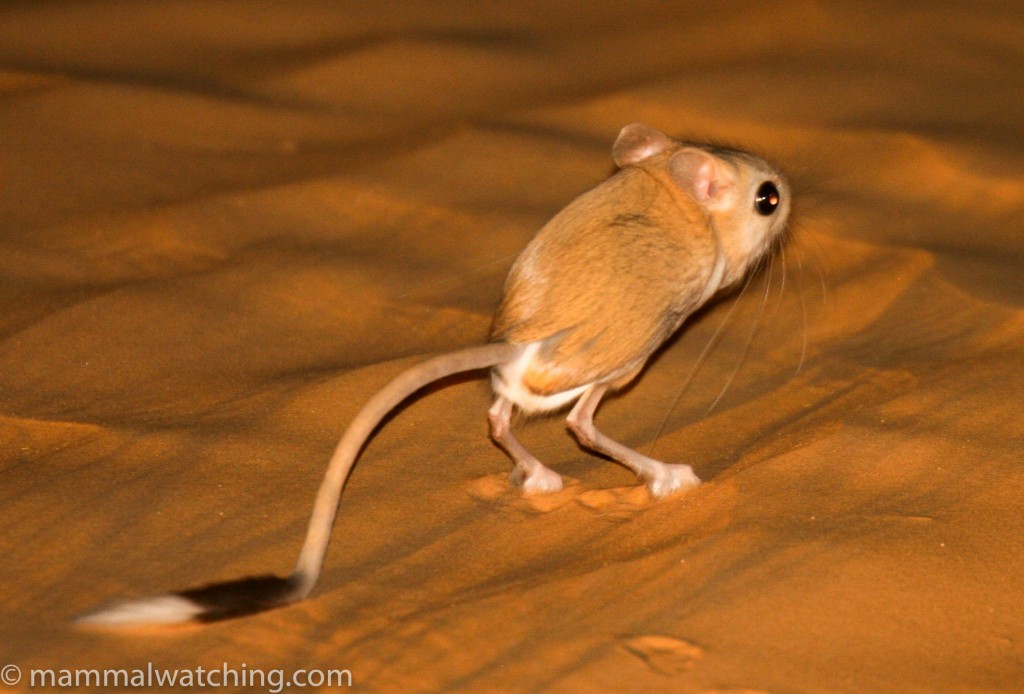
Lesser Egyptian Jerboa, Jaculus jaculus
We also saw a couple of Red Foxes, very different looking to the European flavour, a massive Eagle Owl and – best of all – a Fennec Fox. This was the species I wanted to see here, and Tarek had only ever seen two during many visits. We had good views of the animal running away for a couple of minutes. But just as we were within flashgun range, we got the truck stuck on a dune.
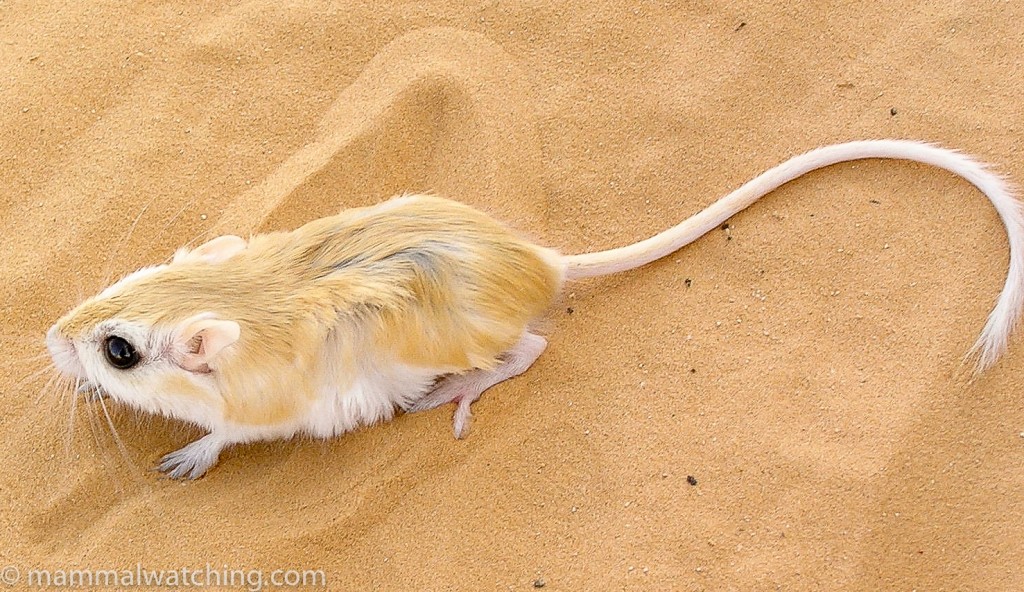
Lesser Egyptian Gerbil, Gerbillus gerbillus
The rest of the night was spent half-heartedly looking for Libyan Polecats (a long shot) and hedgehogs, stopping only to remove a camel that had broken into the park. This was another amusing performance: camels, it seems, don’t like to be told where to go.
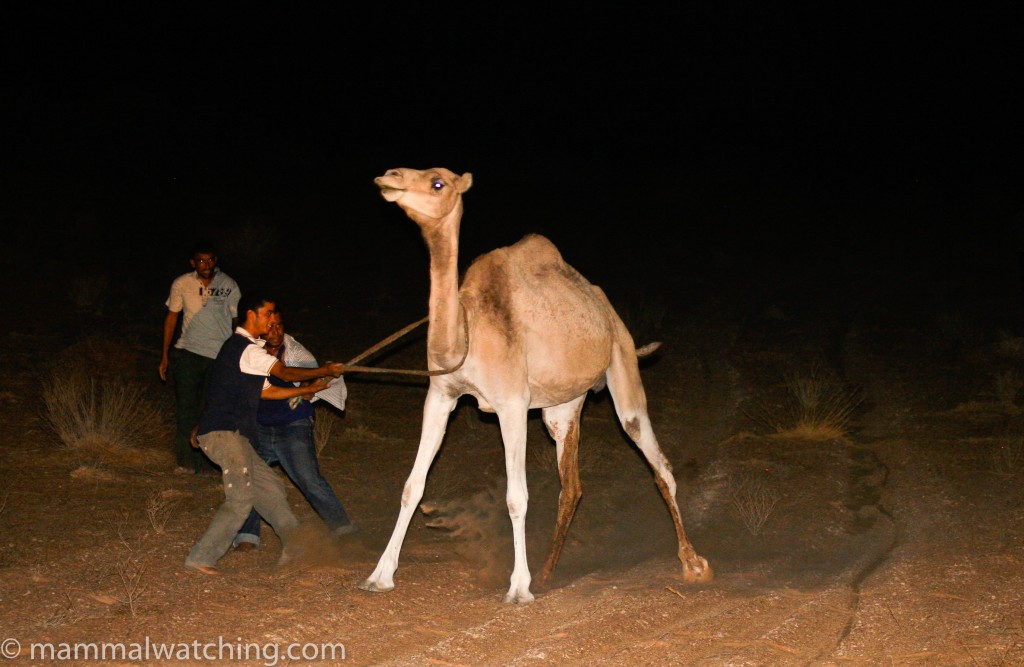
Camel herding
In the morning we took a drive out to the edge of the reserve and finally found a beautiful Rhim Gazelle. One of a small group introduced to the park several years ago that are breeding and most certainly living wild.
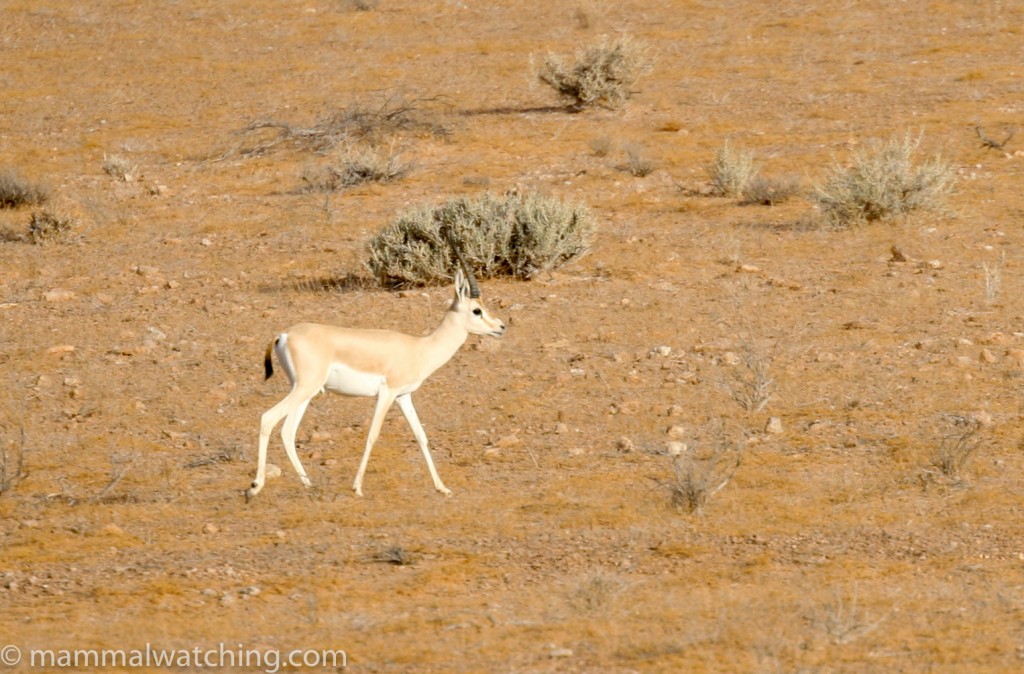
Rhim Gazelle, Gazella leptoceros
El Haouaria Bat Cave
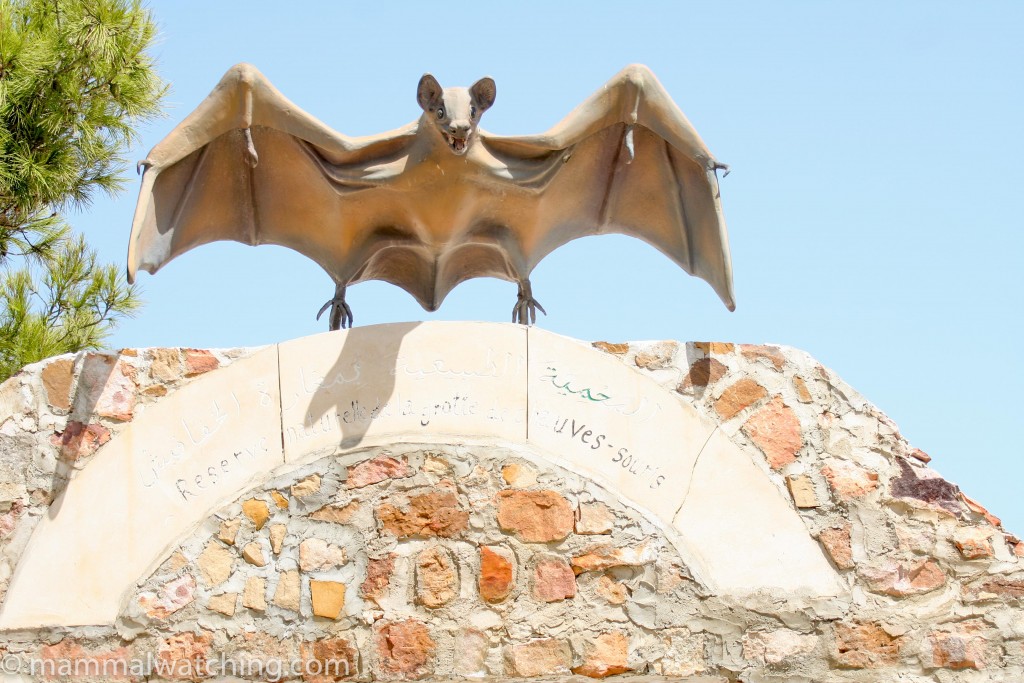
My final stop was at the El Haoauria Bat Cave, about an hour from Tunis at the end of the Cape Bon peninsula.
The reserve and cave are usually locked, but Tarek arranged for the rangers to meet us. Access to the small cave was pretty easy. And inside there were a hundred or so Mahgrebian Mouse-eared Bats (a recent split from Lesser Mouse-eared Bats).
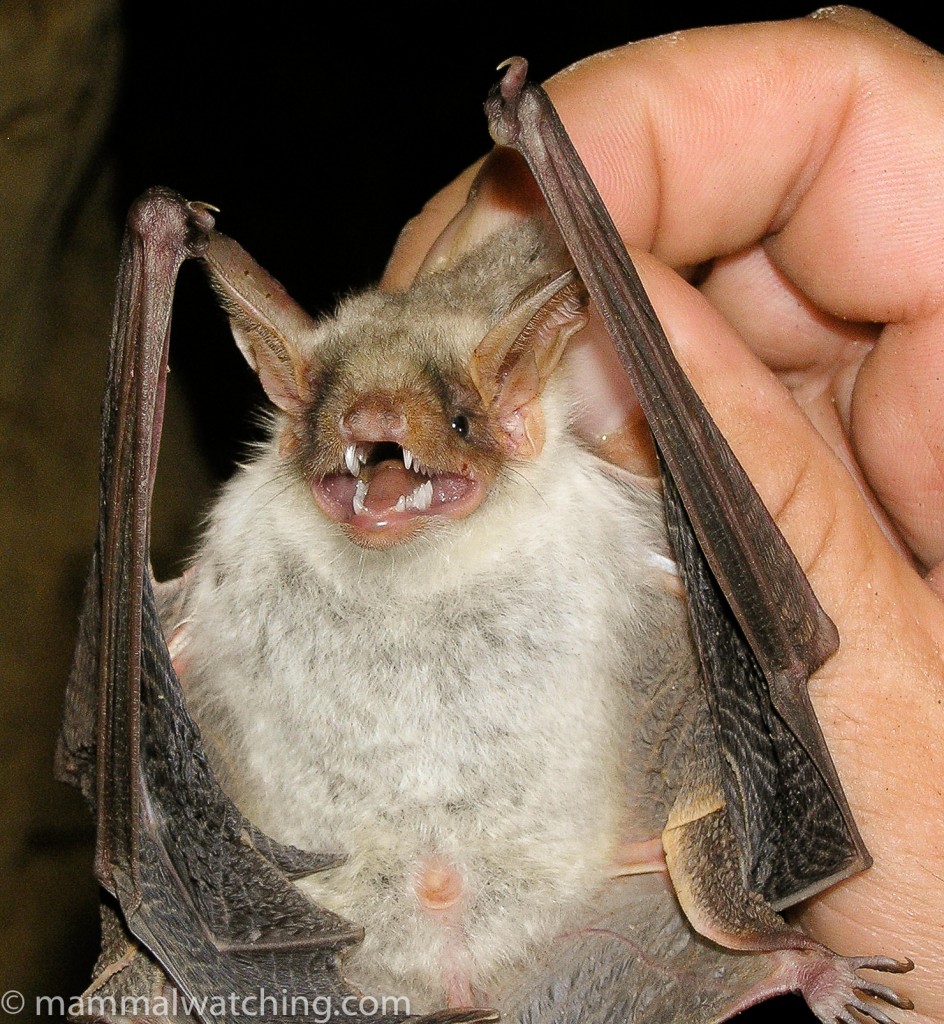
Maghreb Mouse-eared Bat, Myotis punicus
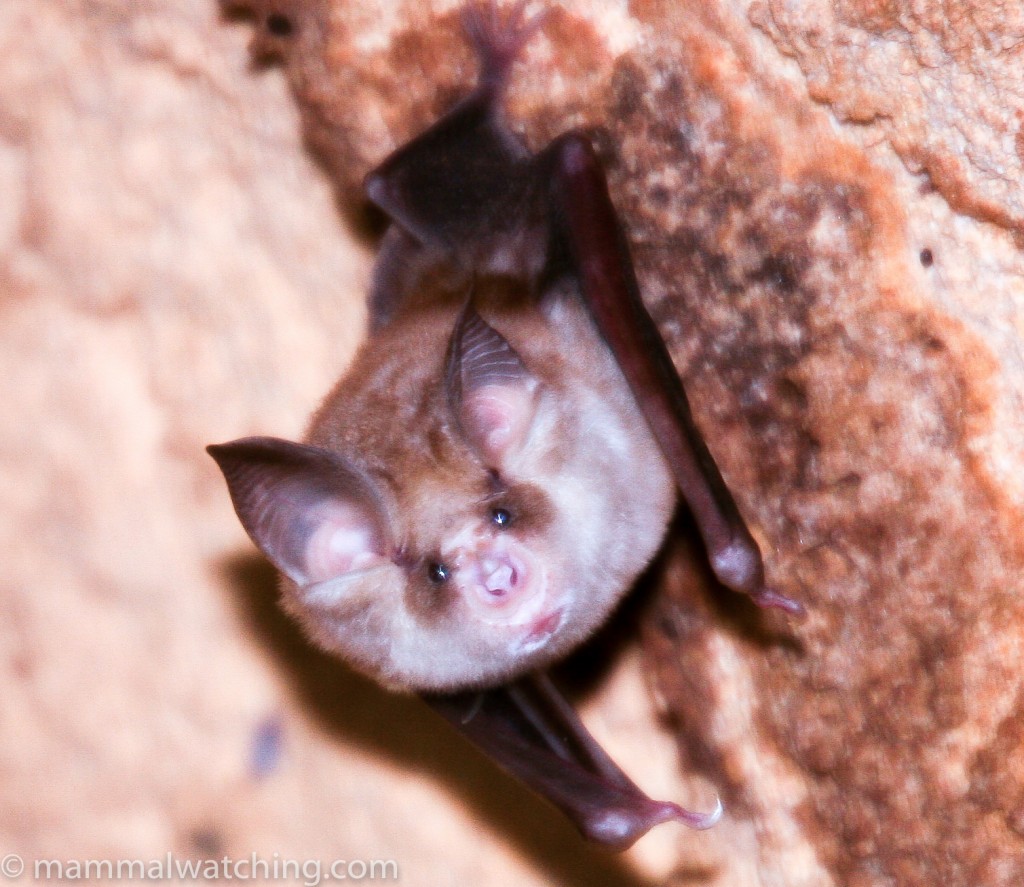
Mehely’s Horseshoe Bat, Rhinolophus mehelyi
There were also a few Rhinoplophus bats. I saw Mehely’s Horseshoe Bats, but Blasius’s and Greater Horseshoes have also been recorded here, as have Bentwing Bats (Miniopterus Schreibersii).
Stuff I Missed
This was a productive trip. Though it was short, we saw just about everything I had hoped to see and found 17 species of mammals, including 12 lifers and all the key species I was looking for. It would have been great to have found a Striped Polecat (always a long shot), or seen either of the two hedgehog species or even a Porcupine, but I was not particularly focused on these species.
Trip List
- Meheley’s Horseshoe Bat
- Mahgrebian Mouse eared Bat
- Lesser Egyptian Jerboa
- Lesser Egyptian Gerbil
- Cape Hare
- Gundi
- African Golden Wolf
- Red Fox
- Ruppell’s Fox
- Fennec Fox
- Dorcas Gazelle
- Cuvier’s Gazelle
- Rhim Gazelle
- Dama Gazelle (semi-captive)
- Scimitar-horned Oryx (semi-captive)
- Addax (semi-captive)
- Barbary Sheep
Community Reports
Tunisia, 2013: Steve Morgan, 10 days & 19 species including Sand Cats, Fennec Fox, Algerian Hedgehog and Barbary Sheep.
Tunisia, 2013: Coke Smith & 20 species including Dama, Rhim and Dorcas Gazelle, African Wild Cat and a mysterious Gundi.
Tunisia, 2012: Romain Bocquier, 6 days & 11 species including a Fennec Fox and Barbary Sheep.
Tunisia and Algeria, 2009: Hugh Buck, 10 days & 17 species including a possible Fennec Fox.
Also See
Please email me if you have tips for mammal watching in this area.


Leave a Reply
You must be logged in to post a comment.